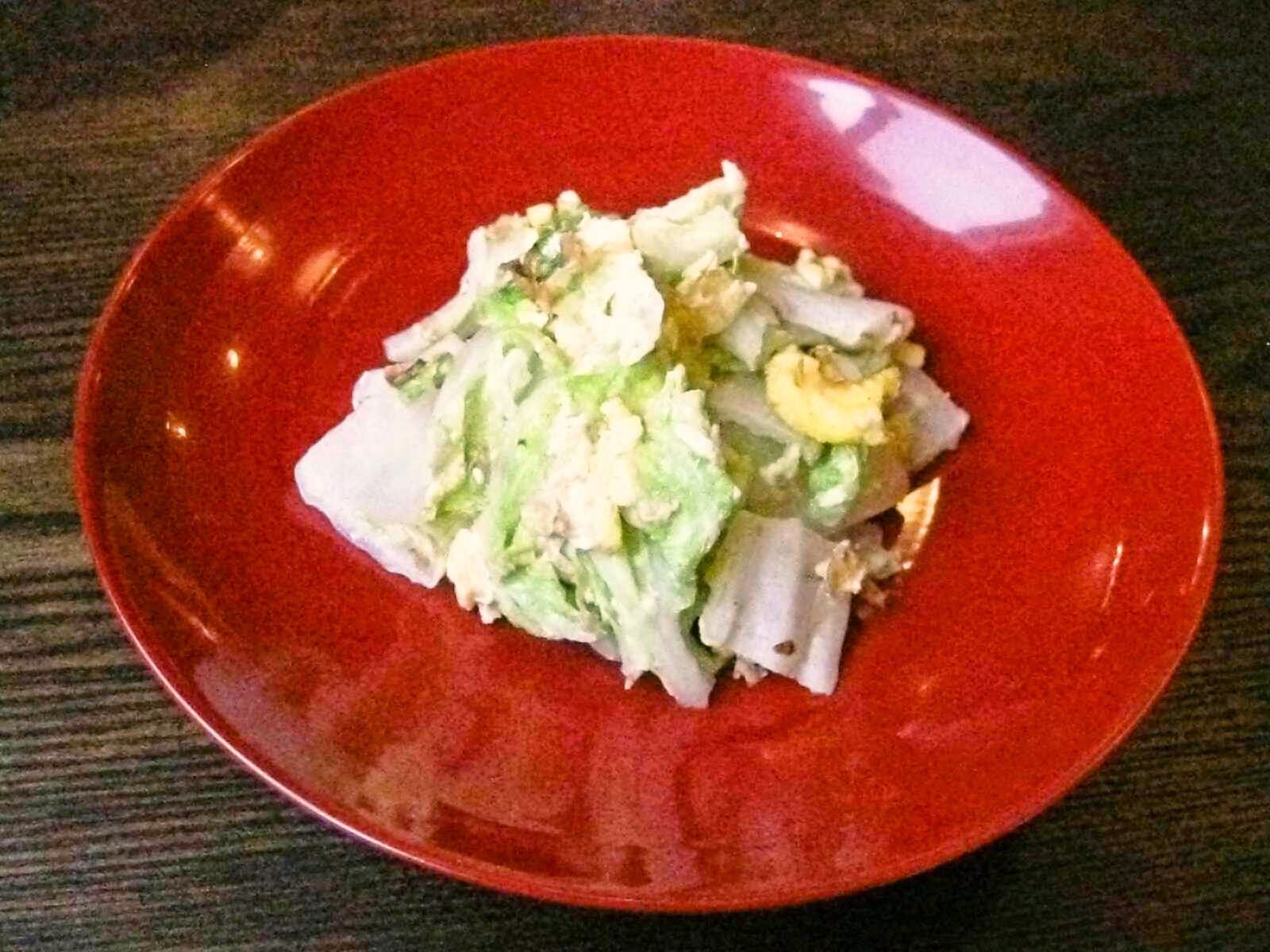The gentle taste of hakusai napa cabbage is further softened by egg, while a small amount of katsuobushi bonito flakes provides a counterpunch of clear saltiness.
1/2 of recipe:
75 calories; 5.5 g protein; 3.8 g fat; 3.7 g carbohydrate; 2.5 g net carbs; 121 mg sodium; 111 mg cholesterol; 1.2 g fiber
<Ingredients>
5 leaves hakusai napa cabbage (198 g in photo)
1 egg
1 1/2 tbsp katsuobushi bonito flakes
3/4 tsp shiokoji salted rice malt
1/2 tbsp sake
1/2 tsp oil
<Directions>
1.
Cut hakusai into 3 cm squares.
Lightly beat egg.
2.
Heat oil, and saute white sections of hakusai on medium low heat.
Flip once or twice.
When starting to become translucent, add green sections of hakusai, and stir.
3.
When hakusai's green sections start to brighten, add sake and shiokoji, and stir.
4.
Swirl in egg, wait 10-15 seconds until bottom of egg starts to cook, and roughly stir.
Turn off heat (even if egg is not completely done).
Add katsuobushi, and mix.
Ready to serve.
<Notes>
1/2 of recipe:
75 calories; 5.5 g protein; 3.8 g fat; 3.7 g carbohydrate; 2.5 g net carbs; 121 mg sodium; 111 mg cholesterol; 1.2 g fiber
<Ingredients>
1 egg
1 1/2 tbsp katsuobushi bonito flakes
3/4 tsp shiokoji salted rice malt
1/2 tbsp sake
1/2 tsp oil
<Directions>
1.
Cut hakusai into 3 cm squares.
Lightly beat egg.
2.
Heat oil, and saute white sections of hakusai on medium low heat.
Flip once or twice.
When starting to become translucent, add green sections of hakusai, and stir.
3.
When hakusai's green sections start to brighten, add sake and shiokoji, and stir.
4.
Swirl in egg, wait 10-15 seconds until bottom of egg starts to cook, and roughly stir.
Turn off heat (even if egg is not completely done).
Add katsuobushi, and mix.
Ready to serve.
<Notes>
- A soft finish is the goal for the egg in this dish. To achieve it, the egg is cooked by the remaining heat (Step 4).
- Adjust the amount of katsuobushi according to how salty your shiokoji is. If sauteed hakusai and egg already have a relatively clear saltiness, use only a small amount of katsuobushi as a topping to add aroma and taste, for example.
- This is a soft-tasting dish; it pairs especially well with dishes that have distinctive flavors or aromas.
- Okaka in okakaitame is a common colloquial expression that means katsuobushi in home cooking. At restaurants and more sophisticated surroundings, tosa is often used for katsuobushi. Tosa is the name of a region in Kochi Prefecture that is famous for pole-and-line fishing of katsuo bonito.











No comments:
Post a Comment